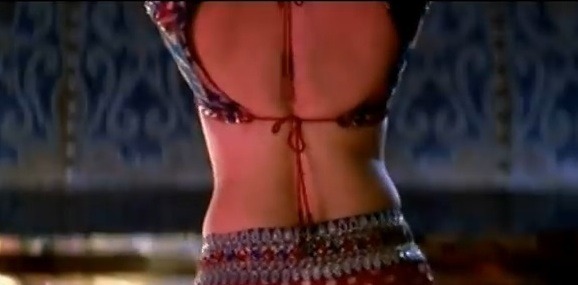
Plug in a search for “item girl” into YouTube and you’ll find scores of suggestive screenshots, a heap of amateur softcore porn and just a handful of actual Bollywood song-and-dance numbers. For the uninitiated, an Item Girl is a scantily-clad female performer featured in a song with no narrative tie to the film’s larger story. Item songs have long been included to increase the marketability of Bollywood films — acting as stand-alone promotional music videos with the goal of packing theaters.
What was once regarded as a tool to catapult unknowns to stardom is no longer seen as the arena of no-names and wannabes. In recent years, many A-list actresses such as Aishwarya Rai Bachchan in “Ishq Kameena“and Kareena Kapoor in “Fevicol Se” have co-opted the item genre, lending legitimacy to what is unapologetically an exercise in objectification.
Don’t get me wrong, this writer has on many an occasion sashayed to “Munni Badnam Hui” or “Kajra Re.” But there comes a time when it is important to assess whether or not the only sexual agency available to South Asian women is the role of Item — a literal object?
The intertwining of sexuality and dance in South Asia is a complex issue. From the courtesans of the Mughal era to the “Nautch Girls” of the British Raj, there has always been a sexuality attached to women who dance for audiences. The status of the former has been romanticized in Bollywood over time, contributing to many classic musical numbers to the filmi canon such as “Chalte Chalte” in Pakeezah.
Regarding the latter, Merchant Ivory’s short documentary Helen, Queen of the Nautch Girls is a must-watch. A dancer with many classic numbers under her belt, Helen wore cabaret costuming certainly scintillating for her era. However, modern era Item Girls need not have the old school pedigree of a trained actor or dancer. A willingness to “expose” is paramount, (as long as you don’t mind a cameraman focused on your crotch or lighted boobs).
The cabaret tradition of the item song can only be good fun if desi women are allowed sexual expression and agency in real life.
Boy, are they not.
The reality remains: try to walk down the street in a South Asian country even when not dressed like Bebo in Dabangg 2 and get ready for leers at best and assault at worst. In a report published in The Global Journal, 76 percent of Indian men reported that filmi depictions of women reinforced eve teasing, with 50 percent saying they believed women liked to be teased.
While embarking on my own current events-inspired film The Pink Sorrys, a big source of ideas was the juxtaposition of the sexy Item Girl in relation to expectations for the real* or average South Asian woman. I wanted to ask the question, “Can a “real” or average woman act sexually expressive or suggestive?” I quickly found that from slut shaming on the Internet to street harassment for short skirts, there is no space for a modern South Asian woman to own her sexuality.
The sexiness of item numbers confuses the predicament: the current culture is one that is sexy but not sexual. You can hip shake to “Choli Ke Peeche Kya Hai,” but you better never “put out” if you ever want to get married, (or at least no one should find out about it). Dance in a backless wet sari all you want, but wear a potato sack before leaving the studio. A-list actresses getting into the item game does help legitimize women’s sexuality on screen — no one is about to call Mrs. Rai Bacchan a slut. It normalizes the idea of how women, and even married women, behave. But the fact remains that we’ve been avoiding seeking change in the most obvious of places.
While politicians and traditionalists continue to claim the films themselves need change, the answer lies in men and teaching them to view women differently. Sexual violence studies are obsessed with the behavior of women and young girls. We should not fear a future of female barflies and tight Kim Kardashian dresses. What we should fear is a world where young men grow up with explicit sexuality that is not ever tied to intimacy and humanity. I fear that a culture that doesn’t even know how to kiss will never see their partners as equal — they will only exist in terms of top and bottom, penetrator and penetratee.
The simplest lesson men need to learn is this: if your partner is not having fun, you stop. No need to ditch your “Billo Rani” as long as you remember that women are people too.
Related Post: Visually Explore The #BollywoodLogic of ‘The Pink Sorrys’
Anam Syed is the co-writer/director of The Pink Sorrys, an “acid punk Bollywood musical.” A kitschy send-up of beloved genre conventions, The Pink Sorrys takes on some of the toughest issue of the day via a highly stylized route. It’s been lauded by Browntourage as a film that “needs to be made.” You can follow Anam on Twitter at @anamarama or find The Pink Sorrys on Facebook.












